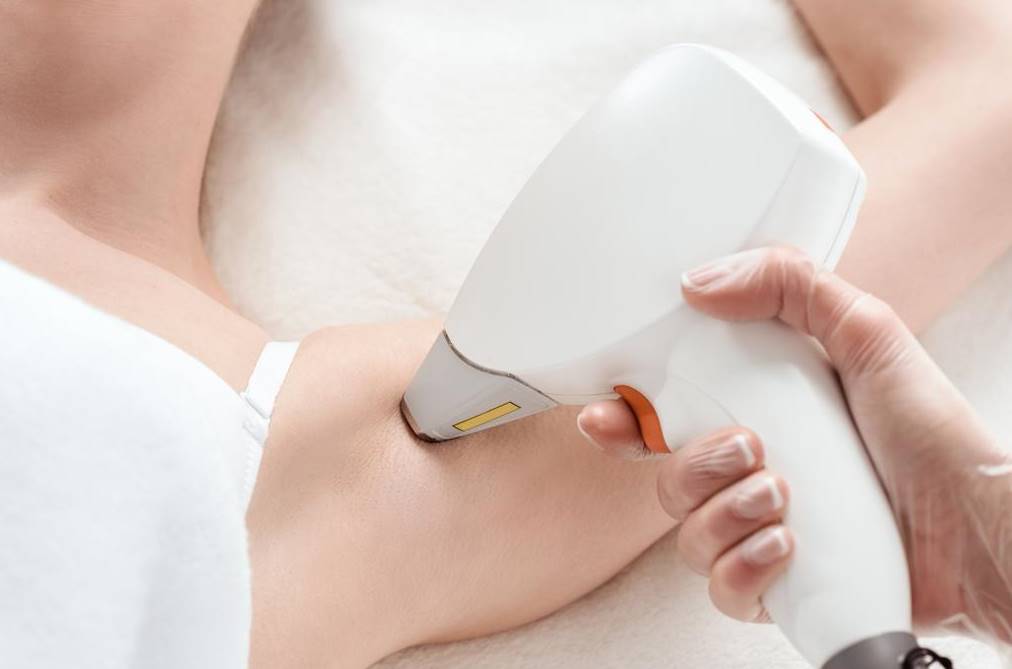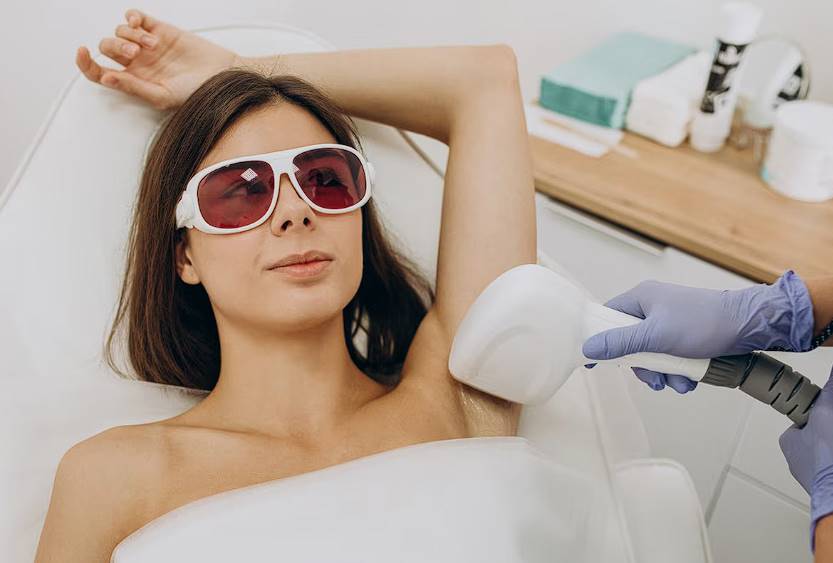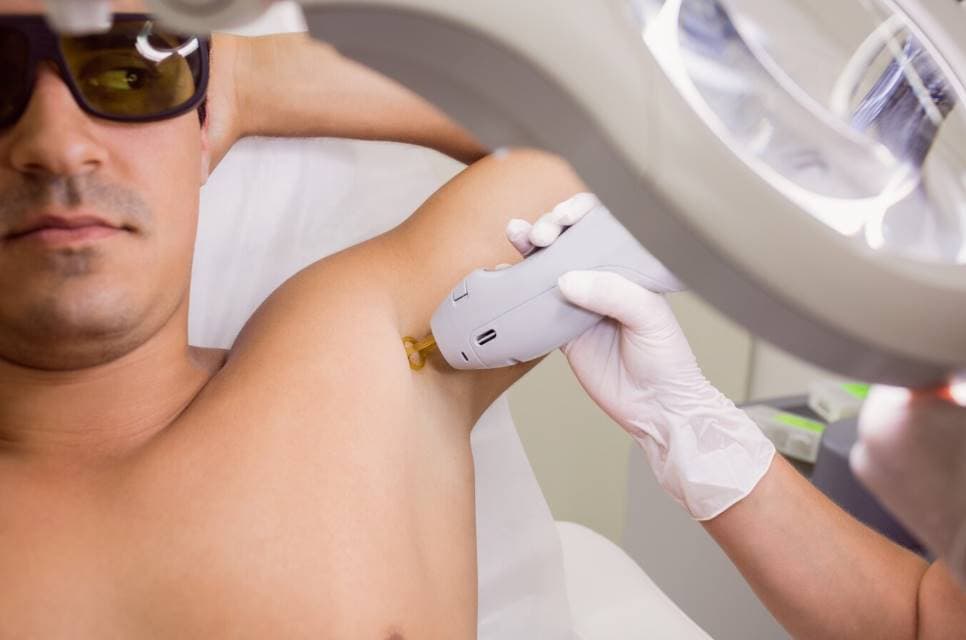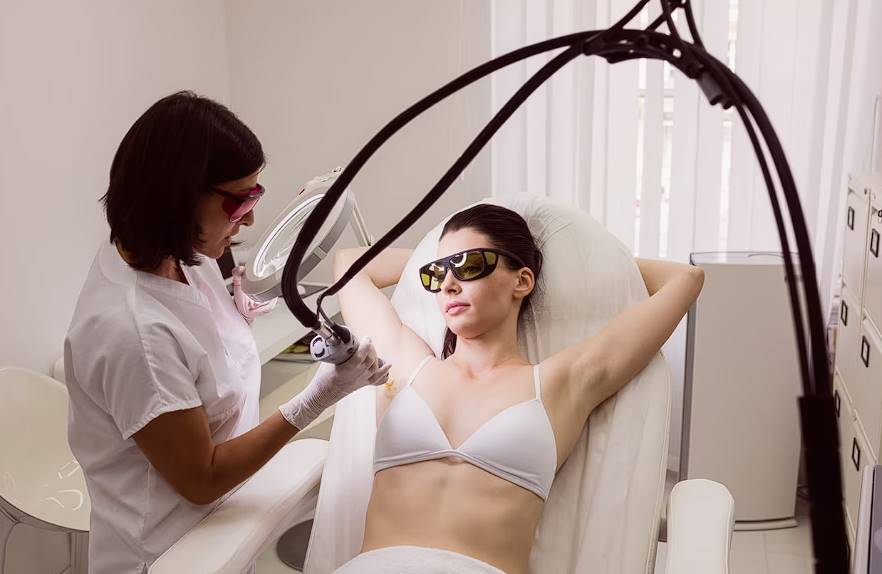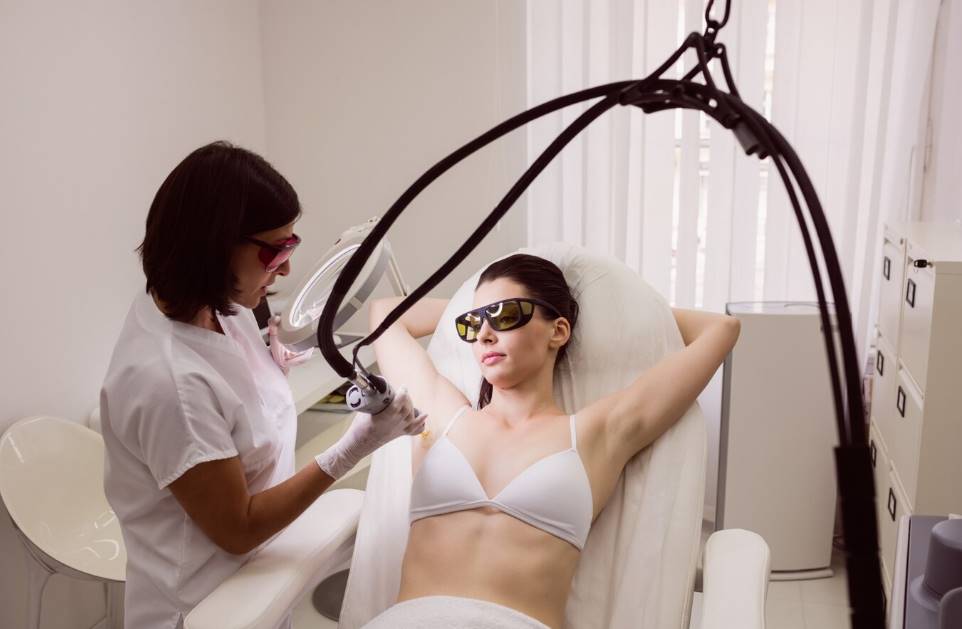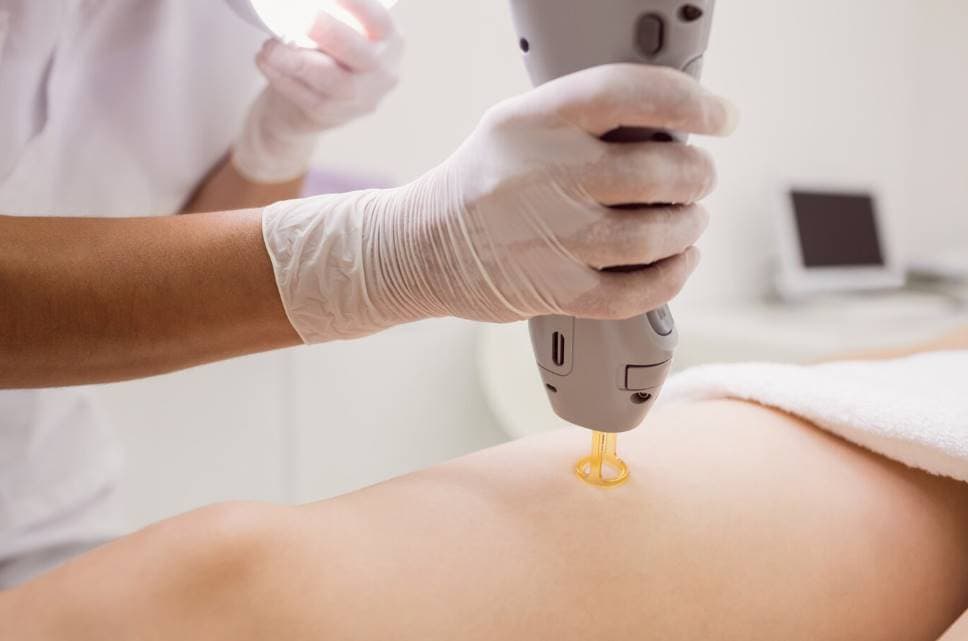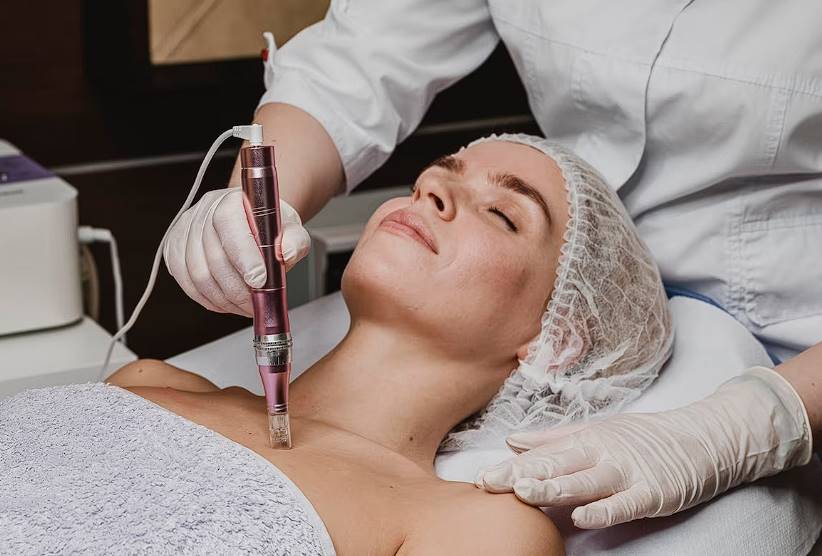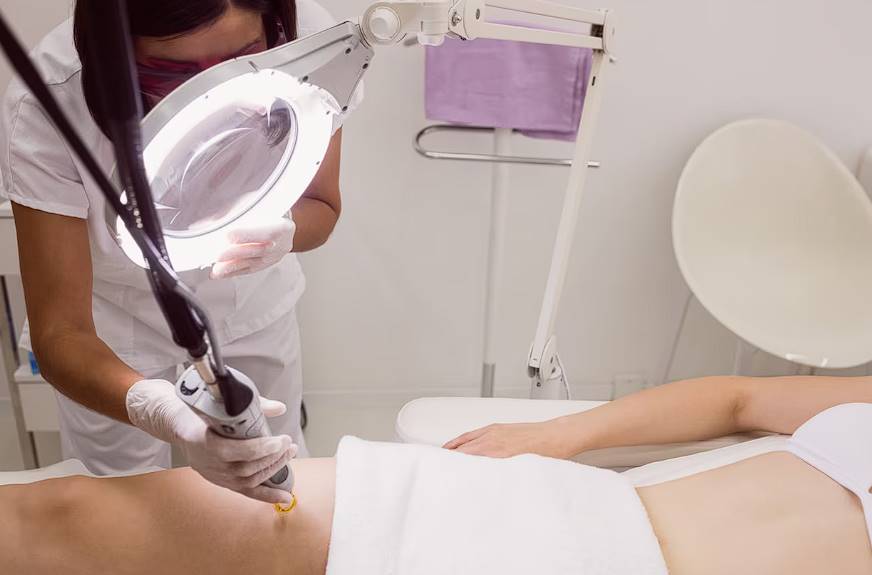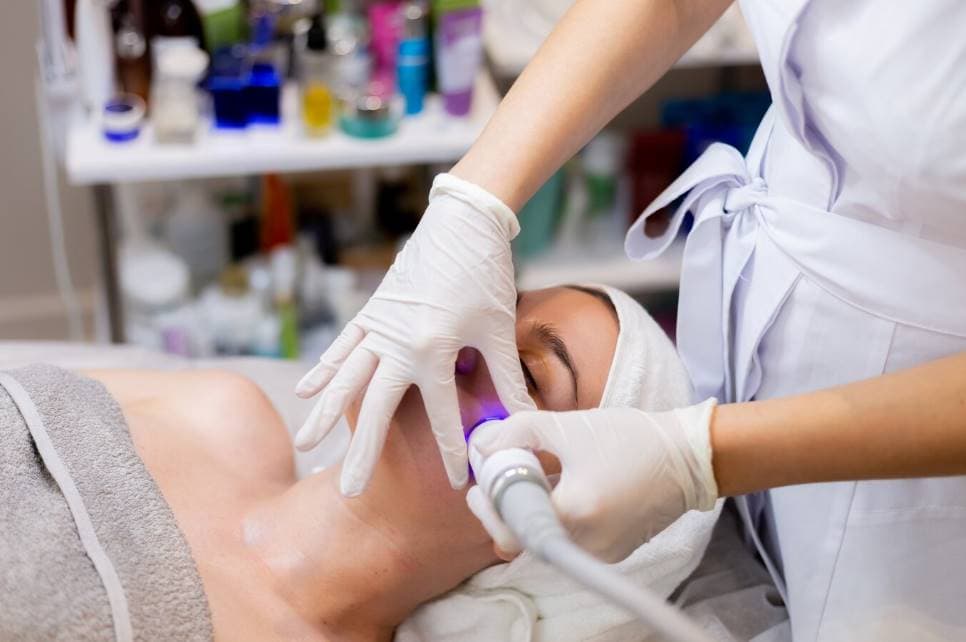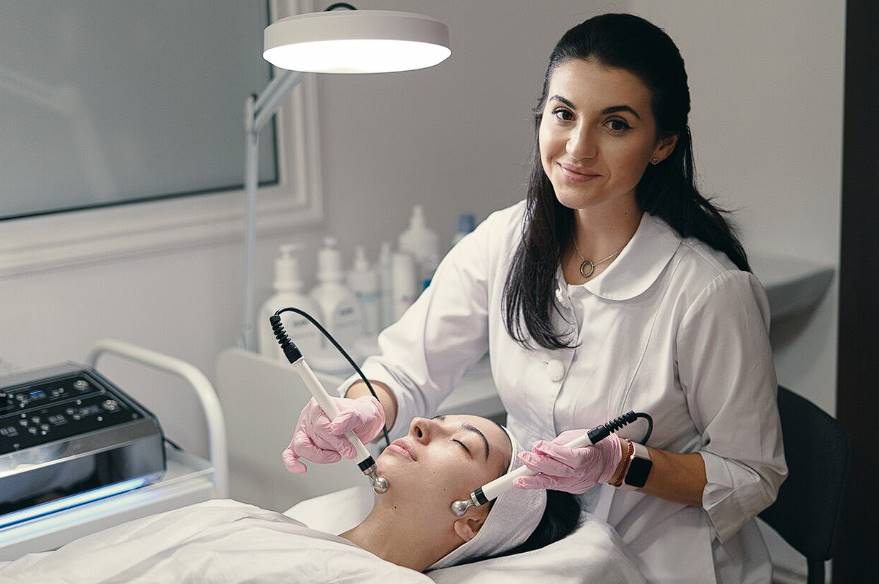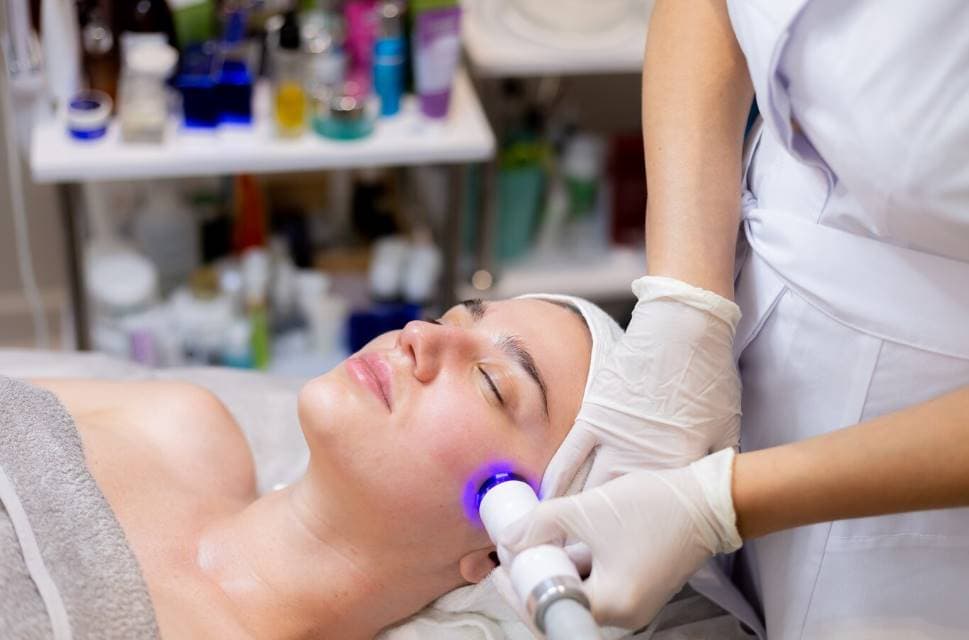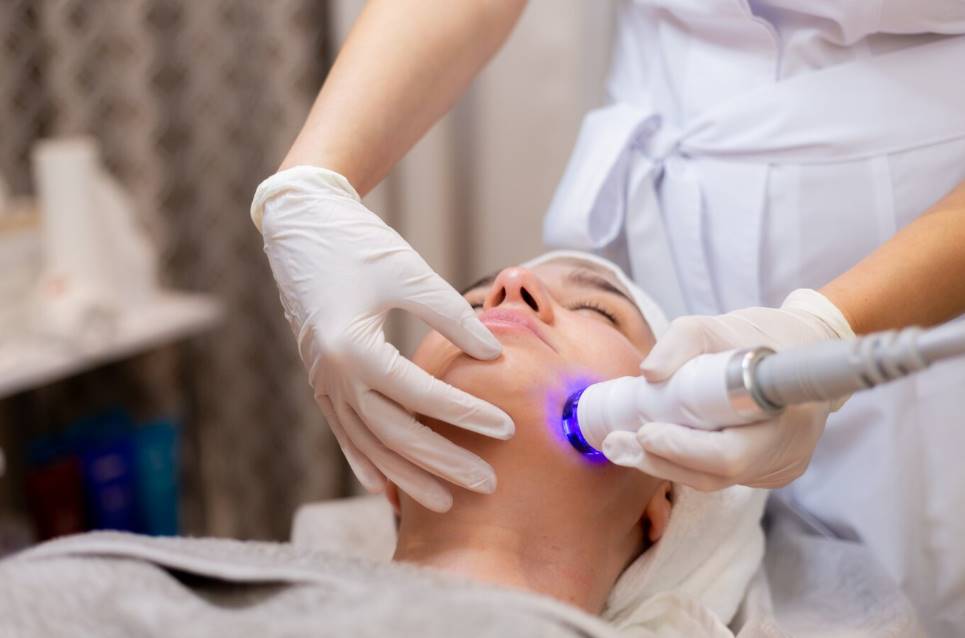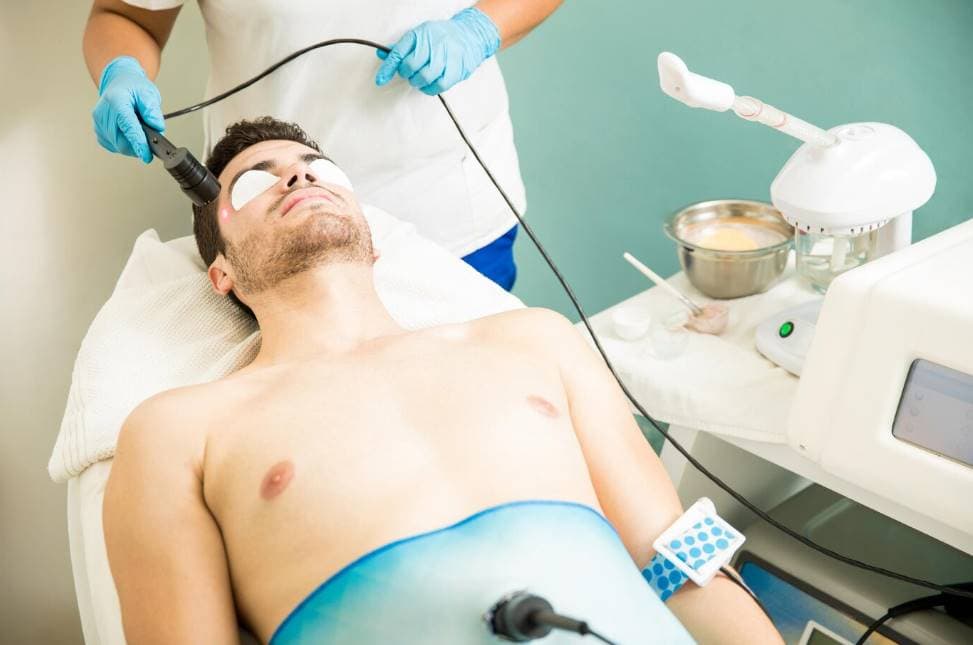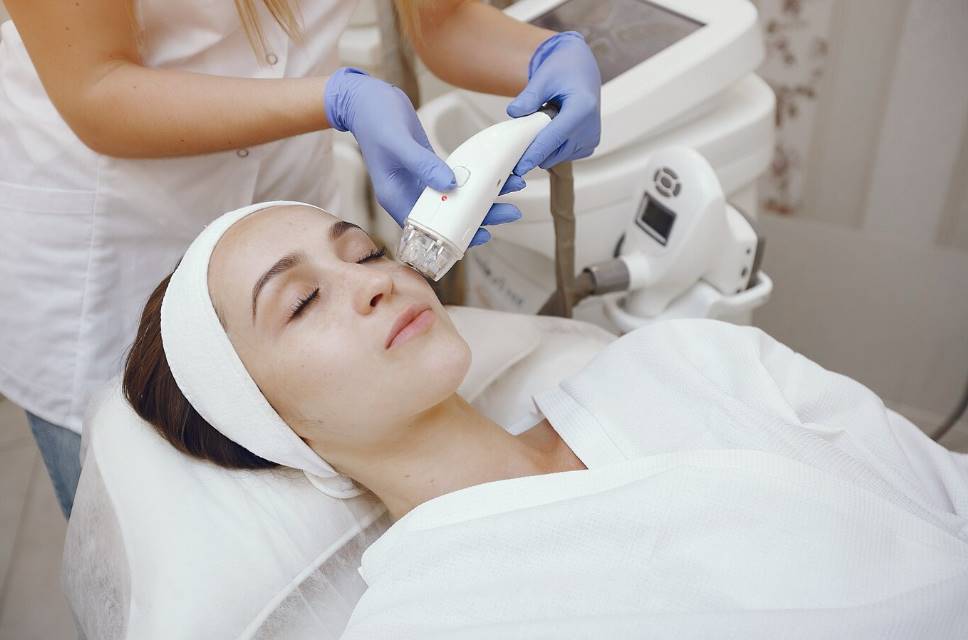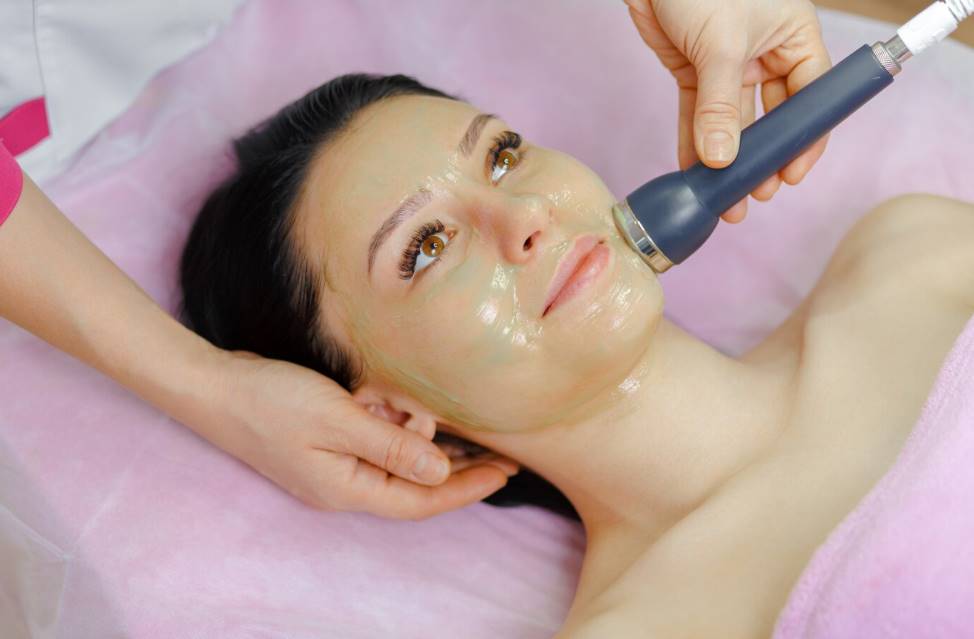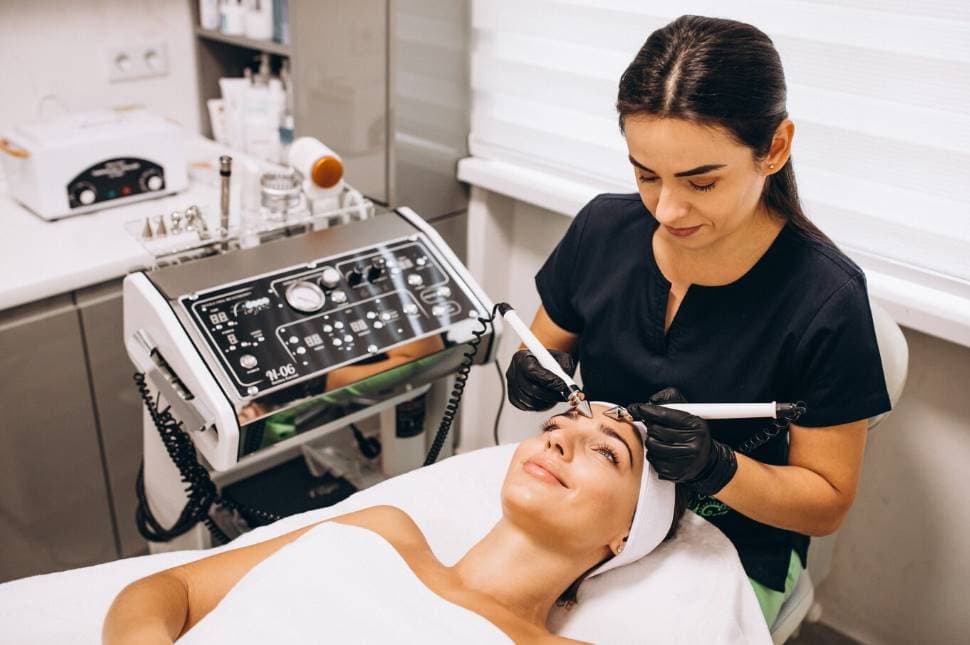For generations now, hairless skin has been considered desirable. Modern hair removal methods may be more time and effort-efficient, but the result is still the same: smooth, attractive arms and legs and possibly more comfortable. One of the most efficient ways to get rid of unwanted hair today is through laser hair removal. Learn what to expect before your first laser hair removal treatment and how to minimise the risk of unpleasant side effects.
What Exactly Is A Laser, Then?

Do you know that the abbreviation LASER is "Light Amplification by Stimulated Emission of Radiation"? An electronic device that produces a concentrated beam of a single colour of light by the stimulated emission of light produced by the collision of two or more photons with a high enough energy threshold is called a laser. With no loss of intensity across great distances, laser beams can transmit tremendous amounts of power.
Simply put, a laser is a very concentrated and powerful light beam. Numerous fields, from manufacturing and communications to cartography, use lasers. Medical-grade lasers are used for laser hair removal since they are safe for use on the skin.
How Do Lasers Remove Hairs?
The light from the laser beam may be transformed into heat, which is why it is effective for hair removal. The melanin (hair pigment) absorbs the light. To generate heat, dark pigments soak up sunlight. Hair development is stunted when the hair follicles are exposed to high temperatures.
Destroying a hair follicle requires killing the stem cells responsible for hair growth and the bulb, where the blood carries oxygen for hair growth. This requires an ambient temperature of roughly 70 degrees.
The more pigment and the thicker the hair, the more light it can absorb. Because the laser light must penetrate the hair follicle to destroy it, waxing or plucking it before treatment is counterproductive. To review, the light is emitted, the pigment in the hair absorbs it, the light is carried through the hair and transformed to heat, and finally, the root is destroyed. The damage done to that hair prevents it from ever growing back. It's just so easy to use, yet so efficient.
What Makes Laser Hair Removal A Good Option?
A therapy that helps you look and feel great has many potential benefits, but here are some reasons why this one is right for you.
It Can Help You Save Money And Time
Do you know how much you spend annually on razors? How long do you typically spend each week at the waxing salon? Both problems can be solved by laser hair removal. You may achieve smooth, hair-free skin and reclaim your mornings by scheduling a quick thanks to this procedure once every four to six weeks.
Effective hair needs to be above the skin for reme shaving and waxing to be effective. Because of this, you'll have to let your hair grow out before getting rid of it. Hair can become with a laser before it becomes an annoyance and an eyesore. If you're interested in saving time and money, laser hair removal is a service you should consider.
It Is Almost Painless
Even without topical anaesthetic, most patients report no discomfort throughout this procedure. To mitigate discomfort and skin irritation caused by the laser's intense heat, a cooling agent is applied before, during, and after the procedure. Laser hair removal is painless and safe, unlike other methods such as plucking or waxing, which can rip the hair out of the skin at the root or shaving, which can cause cuts if you're not careful.
It Lasts A Long Time
Feel unsure about making a consistent treatment plan a priority. Think about it: you won't have to worry about hair removal for six to twelve months. Not only will you save time every day by not having to shave in the shower or schedule regular waxing or plucking appointments, but you'll also be able to ignore your undesirable hair for weeks.
Some patients even report permanent hair loss in the treated area after finishing a single treatment course, which is excellent news. When a patient's treatment regimen is complete, they typically notice a dramatic decrease in their hair's volume. The quantity and quality of unattractive hair that grows back can be drastically reduced if you commit to frequent maintenance treatments as directed by your doctor.
It Removes Resistant Ingrown Hair
The ability of laser hair removal to prevent ingrown hairs is a major perk of this hair removal method. Even with the help of methods like plucking, ingrown hairs can be a pain to get rid of and often come back quickly.
Ingrown hairs are hairs that grow perpendicular to the skin's surface, which can lead to discomfort and lumps on the skin's surface if you repeatedly aggressively remove hair. If they are removed improperly, they can cause an infection. Ingrown hairs can be permanently removed with a laser, and there is no danger of infection or recurrence.
Almost All Patients Find It Effective
In the past, lasers couldn't safely target hair on darker skin tones. However, modern lasers pose no risk to the patient's health and can produce satisfactory outcomes in virtually all cases. Lasers are effective on those with the lightest to the darkest skin tones. No one should waste mental energy stressing over stray hairs. You may feel confident about your day knowing your skin has been treated to its maximum potential. During your meeting with your doctor, you can discuss your options, including laser hair removal.
It Enhances Your Self-Confidence
The way you feel after getting the skin you've always desired is the finest part of this therapy. You can look your best year-round without worrying about how your stubble, razor burn, or irritated skin would affect your wardrobe choices. When your hair falls out, and your skin clears up, you'll finally feel like you can be your best self.
Guidelines For Laser Hair Removal Preparation
While laser hair removal is generally painless and safe, there are some things you can do before your treatment to raise your risk of side effects. It would help if you talked to your cosmetic surgeon or dermatologist about the dangers involved and learned how to minimise them before undergoing any cosmetic surgery. Here are some things to remember before getting a laser procedure done.
Before The Treatment, Cleanse Your Skin
Make sure your treatment region (e.g., legs, underarms, bikini area) is clean before you go to the salon or medical spa of your choice for the procedure. Skin contaminants like lotions and grime diminish the laser's efficiency. The hair follicle can be reached directly by the laser if the skin is clean.
Give Up Plucking And Waxing
Waxing and plucking are two procedures that remove hair by removing it from its follicle. After having your hair waxed or plucked, the laser equipment cannot target the hair pigment. Avoid any treatments that pull out hair from its follicles in the six weeks before your laser hair removal appointment.
Shave The Area For Treatment
One or two days before to a laser hair removal treatment, you must shave, but you can still wax or pluck. It leaves the hair in place so the laser may more easily access the pigment in the hair. Similarly, shaving removes surface hair before laser treatment, reducing the risk of skin damage.
Refrain From Sun Exposure
Traditional lasers require a distinct colour contrast between the skin and hair to successfully target the pigment in the hair. Hence, tanning increases the risk of laser burns. The laser may miss the hair and burn melanin in darker skin. Before your treatment, avoid direct sunlight and tanning beds.
Self-tanning lotions and sprays should also be avoided for at least two weeks before laser therapy. The laser can then target the hair follicle, rather than the tanned skin, for optimal results. This has the added benefit of reducing the risk of burns to the skin.
Use Caution When Using Medications
Medications that make the skin more sensitive and increase the risk of side effects during laser hair removal should be avoided. Among these are:
- Blood-thinners
- Antibiotics
- Anti-inflammatory drugs
- Acne products
- Topical products with retinol
- Hormone treatments
You should talk to your doctor about the dangers of laser hair removal if you use any of the above medications.
Use Skin Care Products Cautiously
Before removing laser hair, ask your cosmetics provider which products are acceptable. Some components in skincare products can increase the likelihood of discolouration, redness, and other negative effects, as well as make the skin more sensitive to pain. For several days before your laser hair removal treatment, it is recommended that you use only mild cleansers and moisturisers.
Stay Away From Alcohol
Alcohol dehydrates the skin, making laser hair removal more uncomfortable, so try to avoid it in the 24 hours following your appointment.
Avoid Consuming Coffee
Stay away from caffeine for a while before your laser treatment. Coffee, like alcohol, can increase skin sensitivity and heighten awareness of pain.
Refrain From Laser Hair Removal Following Botox And Dermal Fillers
Laser hair removal should be postponed for two weeks after getting Botox or dermal fillers. The effects of the injectables may not have fully settled before the laser treatment, which might lead to inflammation and redness.
Select Appropriate Clothes
It would help to give it more care when choosing your outfit for your laser hair removal session. Following your laser hair removal procedure, the area may become irritated. Make sure your clothes are loose and airy to prevent more irritation. Select loose-fitting slacks and cotton underwear if you are treating your bikini area.
Following Your Laser Hair Removal Procedure

Laser hair removal frequently causes redness and edema in the treated area. This may go on for days. For a short time after treatment, the affected area may feel like it has been shaved or sunburnt. Redness and irritation can be treated with over-the-counter products like hydrocortisone or aloe vera gel.
The treatment region will usually see gradual hair loss over two weeks. The sparseness of your hair's growth pattern is typical and will fade as your laser hair removal sessions go.
Scarring, pigmentation changes, and changes in skin texture may be more likely to occur if the treated region is improperly cared for after treatment, such as by exposure to high heat or sunlight.
- In the 24 hours following laser hair removal, you should not expose the treated region to hot tubs, saunas, or strenuous exercise.
- You should stay out of the sun for two weeks after treatment and away from UV tanning beds. Apply a broad-spectrum sunscreen with at least 30 SPF daily, rain or shine.
- Avoid exposing the treated regions to sunlight for at least three days after treatment while using topical treatments that can trigger photosensitivity (such as hydroxy acids, salicylic acid, retinol, and benzoyl peroxide). Clean and moisturise the affected areas gently.
- Please take all oral drugs per the directions provided during your medical laser consultation.
- Invasive cosmetic procedures such as chemical peels, microdermabrasion, Botox, or dermal filler injections should be avoided on the treated area for at least 14 days after laser hair removal.
Results
Typically, you'll start seeing benefits after your second or third appointment, and the full effect of the laser treatments will be seen within a week or two. The typical course of care involves 4-8 visits spaced out over six months. Treatments should be spaced out by the hair growth cycle, which is typically between 4 and 6 weeks.
After your treatment, your skin should feel smooth and completely hair-free. The effects will last until fresh hair growth occurs, usually between 6 and 12 months later. If you want to stop hair from growing, you can schedule regular maintenance appointments or discuss a treatment plan with your doctor. Hair loss after laser hair removal can be permanent for some patients and persist much longer in others than the typical 6-12 months.
Conclusion
Laser hair removal is a common and effective way to get rid of hair that you don't want. It uses lasers that are safe to use on the skin and are made for medical use. The laser beam's light is turned into heat, which is used to destroy hair follicles by killing the hair-growing stem cells and the bulb. For this process to work, the air temperature needs to be about 70 degrees.
Laser hair removal can save you time and money, is almost painless, lasts a long time, stops stubborn ingrown hairs, and boosts your confidence. Patients don't have to shave or wax as often if they have a quick treatment every four to six weeks.
Laser hair removal is almost painless, and most people don't feel anything at all while it's happening. Before, during, and after the treatment, a cooling agent is used to reduce pain and skin irritation caused by the laser's intense heat. Some people say that after just one treatment course, their hair loss is permanent.
Laser hair removal can get rid of ingrown hairs for good, so you don't have to worry about getting an infection or having them come back. Modern lasers work well on people with light to dark skin, so they can be used on patients with light to dark skin.
In conclusion, laser hair removal has many benefits, such as saving money, being painless, giving long-lasting effects, preventing ingrown hairs, and making people feel better about themselves. By talking to your doctor about your choices, you can feel good about what your skin can do and look your best all year long.
Laser hair removal is usually safe and doesn't hurt, but there are some things you should avoid doing before the process. Your face needs to be clean before the treatment because dirt can make the laser less effective. Six weeks before the treatment, don't wax or pluck your hair so that the laser can find the hair pigment. Shave the area that will be treated a day or two before the process to lower the chance of skin damage.
Before laser treatment, stay out of the sun, tanning beds, and self-tanning lotions and sprays for at least two weeks. Use skin care products carefully. A few days before the process, use mild cleansers and moisturisers. Don't drink alcohol or drink coffee for a few days before the treatment to avoid pain and discomfort.
After getting Botox or dermal fillers, don't get laser hair removal for two weeks to avoid soreness and redness. Choose clothes that are open and airy for the area being treated, and don't get any invasive cosmetic procedures done for at least 14 days.
After the process, the area that was treated may have redness and edema, which can be treated with over-the-counter products like hydrocortisone or aloe vera gel. Over the course of two weeks, you can expect to lose your hair gradually, and if you don't take care of yourself, scarring, changes in skin colour, and changes in skin structure may happen.
Avoid hot tubs, saunas, intense exercise, and UV tanning beds for 24 hours after the process. Every day, use sunscreen with at least 30 SPF and stay out of the sun for at least three days in the treated areas. Follow the instructions that your medical laser specialist gives you.
Most of the time, results start to show after the second or third session, and the full effect is usually seen within a week or two.
Content Summary
- Hairless skin has long been deemed attractive.
- Modern hair removal techniques aim for smooth, hair-free skin.
- Laser hair removal is a leading method today.
- Proper preparation minimises the risk of side effects.
- LASER stands for "Light Amplification by Stimulated Emission of Radiation".
- Lasers produce a concentrated beam of a single light colour.
- They can transmit vast power without losing intensity.
- A laser is essentially a potent beam of light.
- Various industries utilise lasers, including medical treatments.
- Medical-grade lasers are safe for the skin.
- Lasers generate heat effective for hair removal.
- Melanin in the hair absorbs this light.
- Dark pigments absorb light, turning it into heat.
- High temperatures inhibit hair growth.
- The goal is to destroy the hair stem cells and bulb.
- The thicker and more pigmented the hair, the more light it absorbs.
- Waxing or plucking before laser treatment is counterproductive.
- The laser emits light, absorbed by the hair's pigment, converting to heat, then destroys the root.
- One main benefit of laser hair removal is cost and time-saving.
- It can replace regular shaving or waxing appointments.
- The procedure targets hair before it becomes a nuisance.
- Most patients find the procedure almost painless.
- A cooling agent is applied to reduce any discomfort.
- The results of laser hair removal can last long.
- After treatment completion, some experience permanent hair loss.
- The procedure can effectively prevent ingrown hairs.
- Ingrown hairs are those growing into the skin, causing discomfort.
- Lasers can permanently remove such hairs.
- Modern lasers cater to all skin tones.
- The procedure boosts self-confidence and comfort.
- Before treatment, ensure the skin area is clean.
- Abstain from waxing or plucking six weeks before treatment.
- Shave the treatment area a day or two before the session.
- Avoid direct sun exposure and tanning before the procedure.
- Avoid self-tanning lotions at least two weeks prior.
- Some medications can sensitise the skin; consult your doctor.
- Certain skincare products can make the skin more sensitive.
- It's advisable to avoid alcohol 24 hours before the session.
- Caffeine can heighten skin sensitivity, so limit its intake.
- Postpone laser hair removal for two weeks after Botox or fillers.
- Wear loose, comfortable clothes on the day of treatment.
- Post-treatment, one might experience redness and swelling.
- The treated skin area might feel sunburnt temporarily.
- Over-the-counter products can soothe post-treatment irritations.
- Protective eyewear is crucial during the procedure.
- Inappropriate preparation can lead to burns or skin damage.
- Multiple sessions might be required for optimal results.
- It's essential to follow aftercare instructions.
- Regular touch-ups can sustain the hairless result.
- Laser hair removal offers a long-term solution to traditional hair removal methods.
Frequently Asked Questions
Avoid plucking, waxing, or bleaching your hair for six weeks before your appointment, as plucking out hair by the root will decrease the effectiveness of your laser treatment. Shave the day before your treatment (as directed by your provider).
However, hair that's too long will lead to singed hair and your skin getting burned. It would help to shave before going in for a laser hair removal session. The ideal time to do so is 24 hours before your session. However, don't shave before your session because that can be dangerous.
For facial hair, treatments are typically spaced 4-5 weeks apart, while body hair treatments are generally scheduled 5-6 weeks apart. If you treat the area every two weeks, you are simply treating it too soon, shooting heat against the skin but not destroying anything.
That's why you want hair in the follicle but not above the skin. Freshly shaved is the best for treatment. If you can't resist waxing, allow hair to grow for at least one week before a laser appointment.
Hair will begin to shed one week after the first treatment, but this is not new growth. Do not pluck or tweeze. Your skin will be smooth three to four weeks after the first treatment. You may see some growth but don't worry about it.
